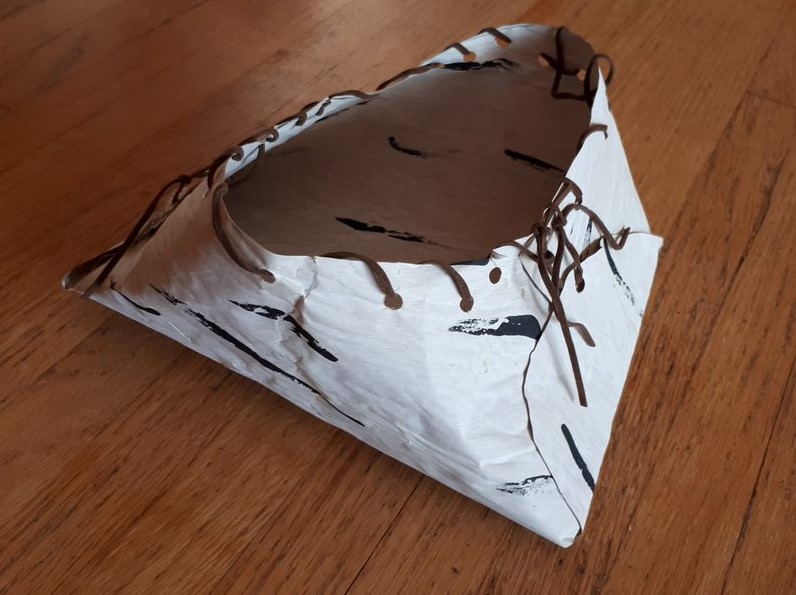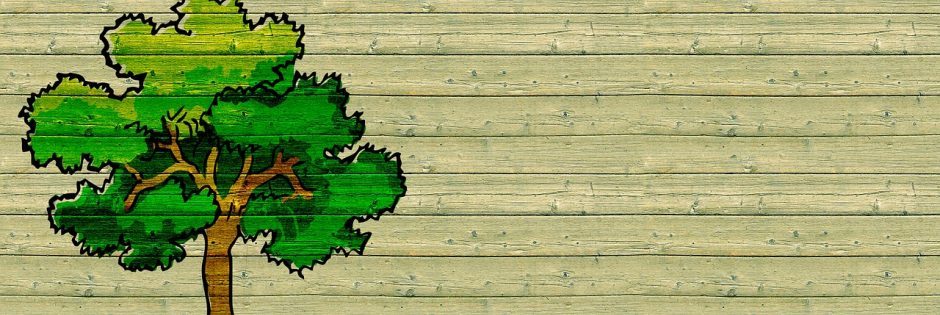My Journey Towards Reconciliation
Prior to this class, I thought I had a firm understanding of Indigenous history in Canada. I thought I was open minded and would feel little resistance to the course material. As soon as I started researching material for this assignment, I realised how resistant I was to the notion that the Indigenous people had experienced a genocide. I found it rewarding to challenge my preconceived notions around Indigenous history in Canada. Next, I started exploring different ways of teaching my students, even though none of them are Indigenous. Lastly, I read the call-to-action many times, and decided to act immediately in my classroom. This what lead me to my aesthetic representation of building the faux birchwood basket. Now come along on this journey of reconciliation with me.
I now realise that before taking this class I had a Eurocentric view of relations between Indigenous People and the colonizers. What I learned in school in the 1990s, was that Indigenous People had started a war with the colonizers and lost. Dr. Pirbhai-Illich’s week four lecture, and all the lectures that followed were eye openers for me. Dr. Pirbhai-Illich introduced me to the concept, that ownership was something unknown by Indigenous people until the white settlers arrived (Pirbhai-Illich, February 23, 2021). When Dr. Pirbhai-Illich introduced this concept to me, I resisted immediately. I learned that they lived with the land and therefore the land provided them with everything they needed so there was no reason to own anything. People who were Indigenous to Canada were also nomadic. The simple act of telling them that this is their small plot of land and that they were to stay there year-round would have been unheard of. Furthermore, the settlers took all the best lands, like the ones close to water, and wildlife. To summarize, I learned that Indigenous Canadians deserve to play an equal part in all decisions that take place on their lands, because they were here before us. I believe that we have a lot to learn from them. Their way of teaching through stories and labour is something that I found inspiring.
I will incorporate a more Indigenous style of teaching as my responsibility as an educator going forward. It has a lot to do with how knowledge is constructed and taught. When Joseph was sharing his stories with us, he noted that a lot of the learning and passing of knowledge was done through labour. Elders sharing with you their stories as you worked with your hands. I think trying to engage the five senses would be a great modality to include in how I teach many of the lessons. I read a good article about restorative practices in teaching EAL students(Ogilvie & Fuller, 2016) . The idea of hosting a teatime talking circle everyday sounds exciting. My first thought as an educator was that this does not fit in the curriculum and what are we going to learn. In the circle they are learning how to speak for themselves, formulate thoughts and share them with their peers. Their peers are learning how to quietly listen and take in what their classmate is saying. The act of drinking a warm liquid and talking is something that goes beyond race and age barriers, it is just human. Another takeaway from this article is the act of having my students journal daily. Not only will they build their writing comprehension skills but will also boost their understanding of their emotions. The concept of having this safe space to share with your teacher gives everyone a voice
Without any Indigenous students in my classroom, I was struggling with how to incorporate Indigenous teachings. I felt relief in reading through the calls to action, as they were very real, tangible things that I could do in my classroom. The calls to action that spoke to me was number 62:
We call upon the federal, provincial, and territorial governments, in consultation and collaboration with Survivors, Aboriginal peoples, and educators, to: Make age-appropriate curriculum on residential schools, Treaties, and Aboriginal peoples’ historical and contemporary contributions to Canada a mandatory education requirement for Kindergarten to Grade Twelve students. (Truth and Reconciliation Commission of Canada, 2015, p.11)
I am going to act immediately in the classroom that I am currently a teacher assistant (TA) in my class that has no Indigenous students, I feel it is important that they learn the truth about how Indigenous people were treated here in Canada. I have researched and found the age-appropriate material that has been made and distributed through the National Centre for Collaboration in Indigenous Education. I found the way Joseph shared information with us to be so interesting and easy to understand, and I would like to adopt a similar style of teaching. I decided on building a faux birchwood basket with my students for my aesthetic response. I talked to my colleague first, then I developed a lesson, collected the materials, and as a group we built a the faux birchwood basket. The students were engaged and enthralled with the material. It was a great experience all around and has solidified this working with your hands approach to teaching in me. Since that lesson students have been bringing me all sorts of facts ideas about birchwood. I am going to contact Joseph and see if he can connect me with some local elders that he may know to come and work with me and my class. Moving forward, I believe that steering my classroom away from Eurocentric viewpoints will come with some difficulties, namely from my peers, and potentially parents of students. I will have to be strategic as I plan my lessons to be more in line with call to action 62. I feel that, bringing people into the conversation about my future lessons as opposed to shutting out those who disagree, will make for a better experience for my students and me. When I believe in what I am doing, then great learning outcomes will follow.
In conclusion, I had a lot of unexpected findings and a-ha moments come out as I worked on this assignment. Dr. Pirbhai-Illich lecture and the subsequent lectures about colonialism, opened my eyes to what happened, and what is still happening to this day. The reason I came to university was to challenge my beliefs and pushing against my resistance was uplifting. I am excited to implement some of these practices, such as working with our hands and freely sharing in tea times. Finally, as I moved on, it really cemented exactly what I need and can do. It also guided me to what I wanted to do for my aesthetic representation which was building the faux birchwood basket with my students. It was fun working with kids and learning while they learned. I did not practice the build ahead of time, I found that simple act to be freeing. This is just the beginning of my journey to reconciliation.
Reference List
Ogilvie, G., & Fuller, D. (2016). In the Classroom Restorative Justice Pedagogy in the ESL Classroom: Creating a Caring Environment to Support Refugee Students (Vol. 86). http://dx.doi.org/1018806/tesl.v33i0.1246
Pirbhai-Illich, F. 2021, February 23. Invitation & Hospitality: Global/Local Politics of Education; Ethical Relationality [Lecture recording]. UR Courses. https://www.youtube.com/watch?v=jUuU7DKWuUs.
Truth and Reconciliation Commission of Canada. (2015). Truth and Reconciliation Commission of Canada: Calls to Action. Truth and Reconciliation Commission of Canada, 20. http://trc.ca/assets/pdf/Calls_to_Action_English2.pdf

